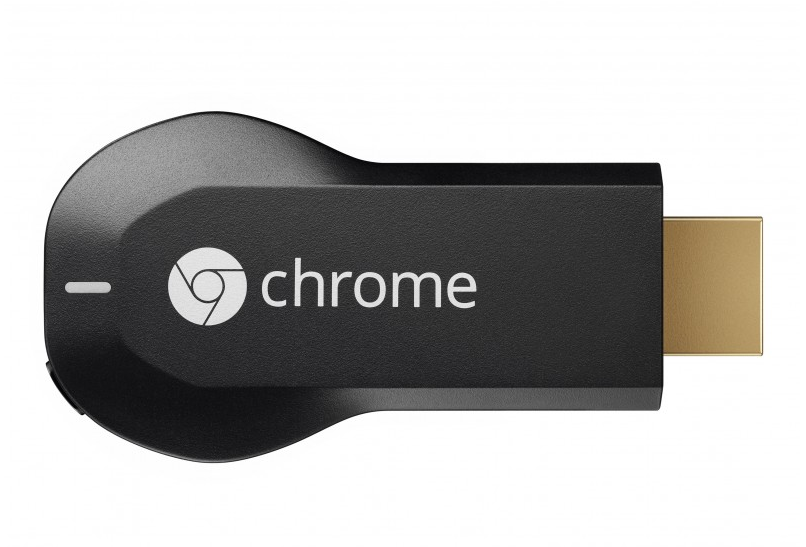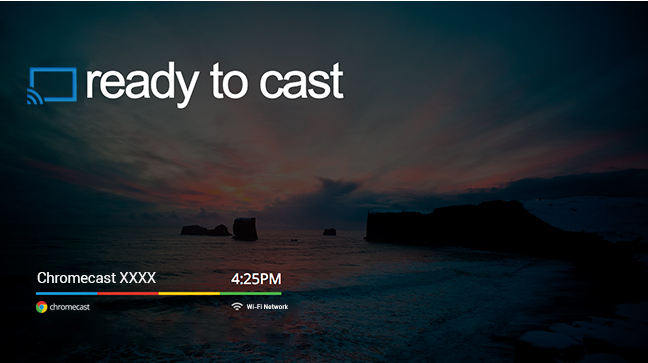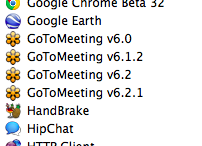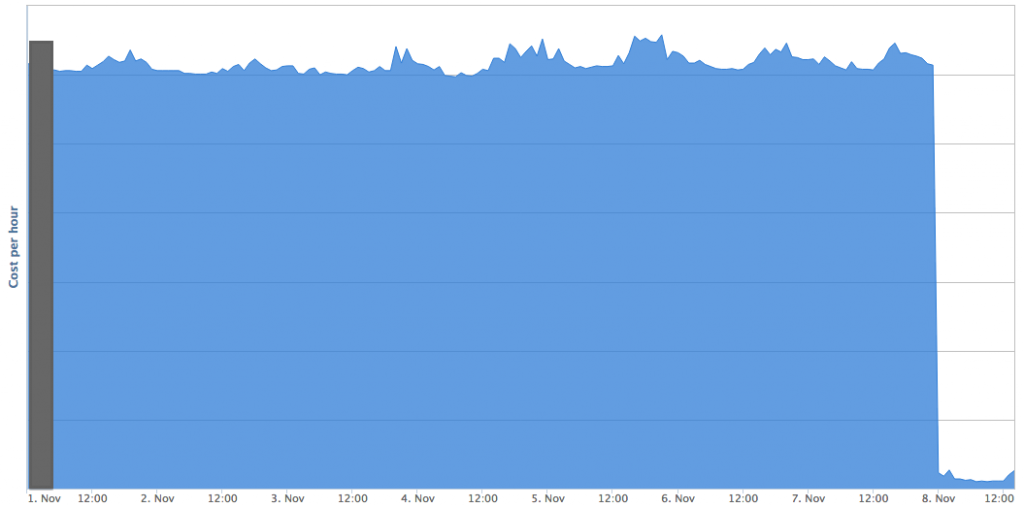(Cross-posted to the Mediafly Blog)
A salesperson and client walk into a conference room. On the wall is a TV with Chromecast. The client switches the TV to Chromecast. The salesperson opens their Chromecast-enabled app, and instantly pairs with their tablet. The meeting starts, and the salesperson presents from their tablet. No wires, no fuss. It just works.
 People who run meetings and present are used to wires. HDMI and VGA, along with their adapters for their iPad or Mac. All to connect to a grainy, washed out, off-color projector. Wires have to be passed around between participants. Oftentimes the adapter is mistakenly left behind and needs to be repurchased.
People who run meetings and present are used to wires. HDMI and VGA, along with their adapters for their iPad or Mac. All to connect to a grainy, washed out, off-color projector. Wires have to be passed around between participants. Oftentimes the adapter is mistakenly left behind and needs to be repurchased.
Chromecast has the potential to change all this, and become THE replacement for cables in the conference room.
Opportunities
Chromecast is a $35, 3″ device made and sold by Google that simply plugs into an open HDMI port in your TV. It connects to your Wifi and is controlled by phones, tablets, and PCs. Most technologists think of Chromecast as the cheap HDMI dongle that lets people more easily stream Netflix and a limited, though growing, list of apps. Even with only a few interesting use cases available today, and even though it launched only halfway through 2013, Chromecast has already become the #1 selling connected TV device in 2013 in the US.
Challenges
But to-date Chromecast is of limited use in the office. There are three main reasons:
1. Corporate networks require additional setup
The Chromecast setup phase is challenging for most corporate networks. Chromecast devices broadcast to a specific port to discover available Chromecasts, and they respond back to the broadcaster with “hey, I’m a Chromecast and look like this.” While this works really well on home networks, it breaks down on corporate networks. Cicso has a lengthy technical note dedicated to how to overcome this with their gear, and it summarizes into the following steps:
- Create a separate wireless network for Chromecast
- Open UDP port 1900 and allow broadcast on 239.255.255.0
- Disable peer-to-peer blocking
Without these steps, Chromecast cannot even complete the initial setup phase. And few IT admins will bother to go through these steps to allow the device to function on their network.
2. Guest usage is often impossible
For guests to use it (think: salespeople, customers), the corporate network a.) must allow guests, and b.) those guests must be on the same network as the Chromecast so they can discover the device. This leads to another series of challenges that IT admins would have to solve.
3. Business-focused Chromecast app support is limited
As a Chrome Mac user, I can cast (mirror) my desktop with some effort. But these are clunky if I simply want to present a deck I prepared. I want my presentation tool to natively support Chromecast.
Solutions
First, lets start with challenge #2: Guest usage is often impossible.
Google announced last month that an upcoming update to Chromecast will help solve #2. With the update, Chromecast will use ultrasonic sound to determine if a user is in the same room as a Chromecast. Once that pairing happens, the user can control the Chromecast off their mobile/cellular or wifi network from their phone or tablet, just like that.
Next, challenge #3: Business-focused Chromecast app support is limited.
Google has a beachhead into this already. The Chromecast can cast any tab within Chrome, can cast the entire desktop (though this feature is experimental), and can natively cast Google Drive/Google Docs documents. Immediately, this can overcome the vast bulk of objections of using Chromecast, albeit not very smoothly. Google can solve this further by taking the following steps:
Making screen mirroring extremely fluid, possibly with desktop extensions that don’t require Chrome and are braindead simple
Directly asking/providing incentives for enterprise software companies to add support for Chromecast into their business apps.
Gaps
This still leaves challenge #1: Corporate networks require additional setup as an issue for Google to address. It’s unclear whether Google has a strategy for this, or even cares to try to solve this problem. Historically, Google has not done a good job addressing enterprise needs in what they conceive as consumer products (see their awful support and limited enterprise-focused feature set in Android, as a case study). Moreover, it’s an incredibly hard problem to solve; enterprise networks are often very tightly locked down and often very different from each other.
Other devices?
In a later post, I will lay out where Chromecast sits relative to AppleTV and Roku, its closest competitors with respect to use in the enterprise.
It will be interesting to watch how Chromecast evolves over the coming years, and potentially participate in its evolution. We are considering adding support for Chromecast into our products, and look forward to your feedback!







